
Container Architecture and The Temporary Covid Facilities
When one thinks of shipping containers, the only thought that arises is about‘shipping goods’. Due to the coronavirus, shipping might have slowed down, but the healthcare and wellness industry are looking at innovative ways to build plug-inor in other words, makeshift intensive-care pods. Here, they have combined intelligent technology with a modular design. Shipping container architecture is a type of architecture that uses steel intermodal containers (shipping containers) as a structural element. It is also referred to as cargotecture. Let’s have a look at the different types of container architecture facilities made during the pandemic:
Shipping Container CURA Pods in Italy
Italy has come up with an intensive care pod made within a shipping container, intended to increase Italy’s intensive care capacity. The pods are called Connected Units for Respiratory Ailments – or CURA, which is the Latin word for ‘cure’.
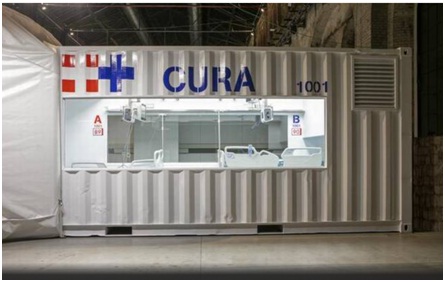
Photo Credit: Max Tomasinelli
The CURA units are built-in repurposed 6.1-meter-long steel trailers. The units would highlight a ventilation framework that creates negative pressure inside, a typical procedure utilized in medical clinics to keep defiled air from getting away. The units have been intended to conform to Airborne Infection Isolation Rooms (AIIRs) guidelines.
Individual pods are connected by an inflatable structure to create multiple modular configurations (from 4 beds to over 40), which can be deployed in just a few hours. Some pods can be placed in proximity to a hospital to expand the ICU capacity.
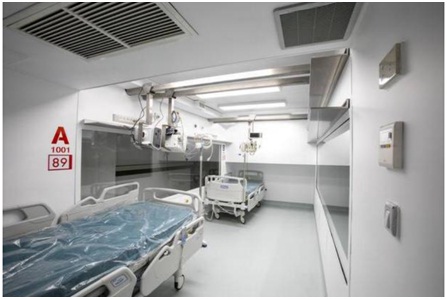
Shipping Container Pods in Canada
In Canada, Citizen Care Pods was set up which dealt with screening and testing. With the help of Microsoft, Toronto-based WZMH Architects, PCL Construction, and Insight Enterprises worked hard to bring the project to fruition within a month.
“The Citizen Care Pod is a turnkey solution that accelerates recovery for businesses and public institutions, such as airports, offices, sports and entertainment complexes, construction sites, and more by rebuilding staff and customer confidence…” – Carl Demarco, Chairman, and CEO of Citizen Care Pods Corporation
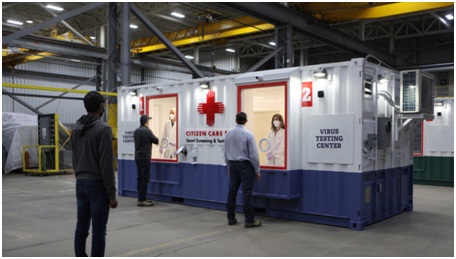
These pods are made from 20-foot or 40-foot shipping containers. Each has 4 to 10 testing stations. The pods have the technology to monitor temperature, pressure, and humidity inside, and can give warning in case thresholds are exceeded.
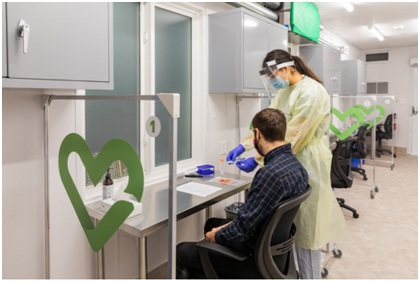
Other built-in features include cameras and speakers to virtually assess the distance between people. Prompts are sent out in case the social distancing norms aren’t being followed. Smart hand sanitization stations are also placed outside and within the pod.
In the RUAG Field Hospital case, a global organization of designers and architects united to convert shipping containers into two-bed intensive care units. It utilizes a blend of standard ISO steel trailers, alongside expandable compartments to assemble field clinics in record time.
Housing For Medical Staff
Another worldwide issue that the medical industry is facingis the framework of medical staff accommodation, with numerous nurses and doctors staying in hospitals and clinics for self-distancing purposes.
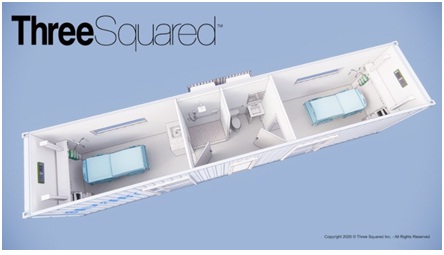
Photo Copyright Three Squared, Inc.
Three Squared is presently offering its cargo containers, also called environment-controlled lodging units, for specialists and attendants to stay in. These emergency clinic staff would then be able to remain nearby to patients who need them the most, likewise keeping up important social distancing and cleanliness conventions. They even have facilities like electronically operated and completely equipped restrooms in the best-in-class compartment abodes.
Handling the Pandemic Situation in Prisons
In the UK, 500 impermanent jail cells are being constructed using steel trailers, with more expected to be assembled if the situation demands. They are built in a pre-assembled way into the grounds of seven penitentiaries, with an end goal to prevent the spread of the infection in prisons where it’s harder to maintain social distancing.
Containers have been utilized for transitory measures for quite some time now, yet never in such a capacity for medical care as they are today. As the pandemic rages on, we will be forced to deal with a new normal for reactive relief efforts.


No Comments
Sorry, the comment form is closed at this time.